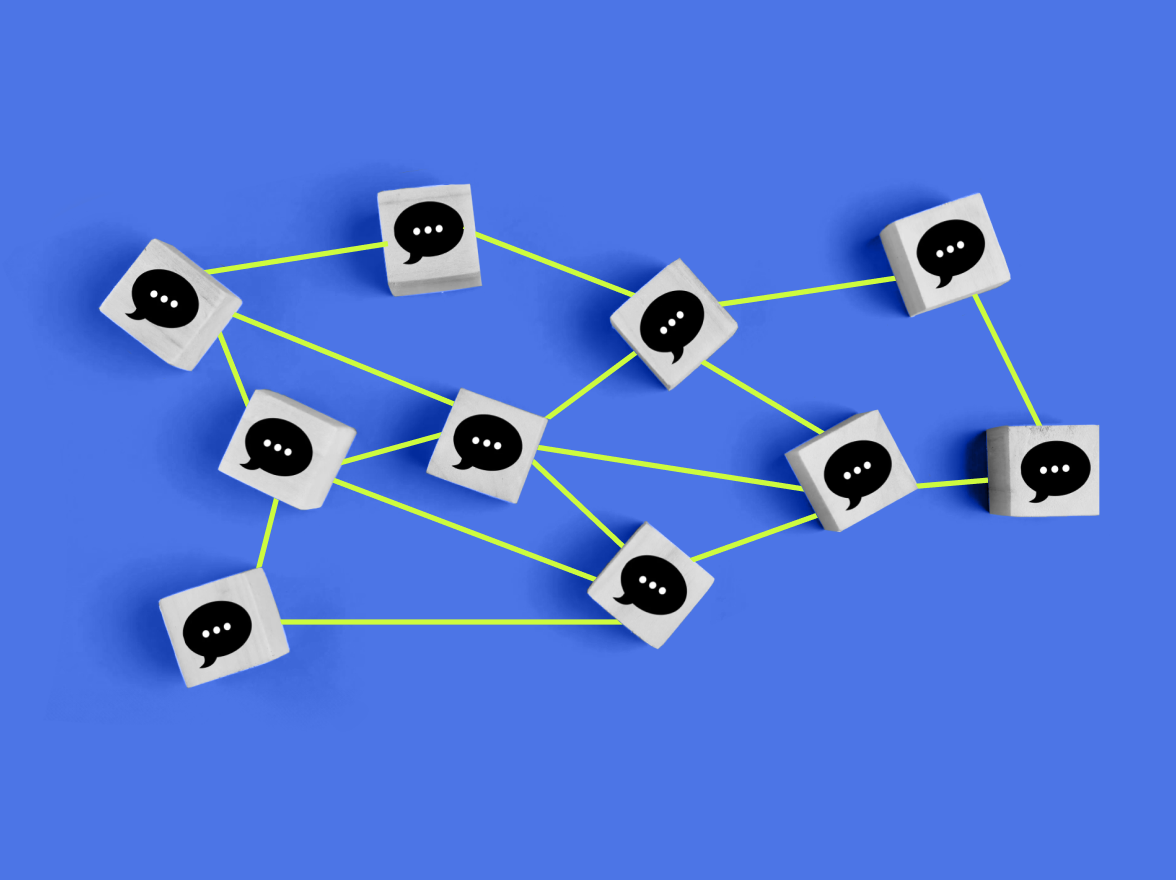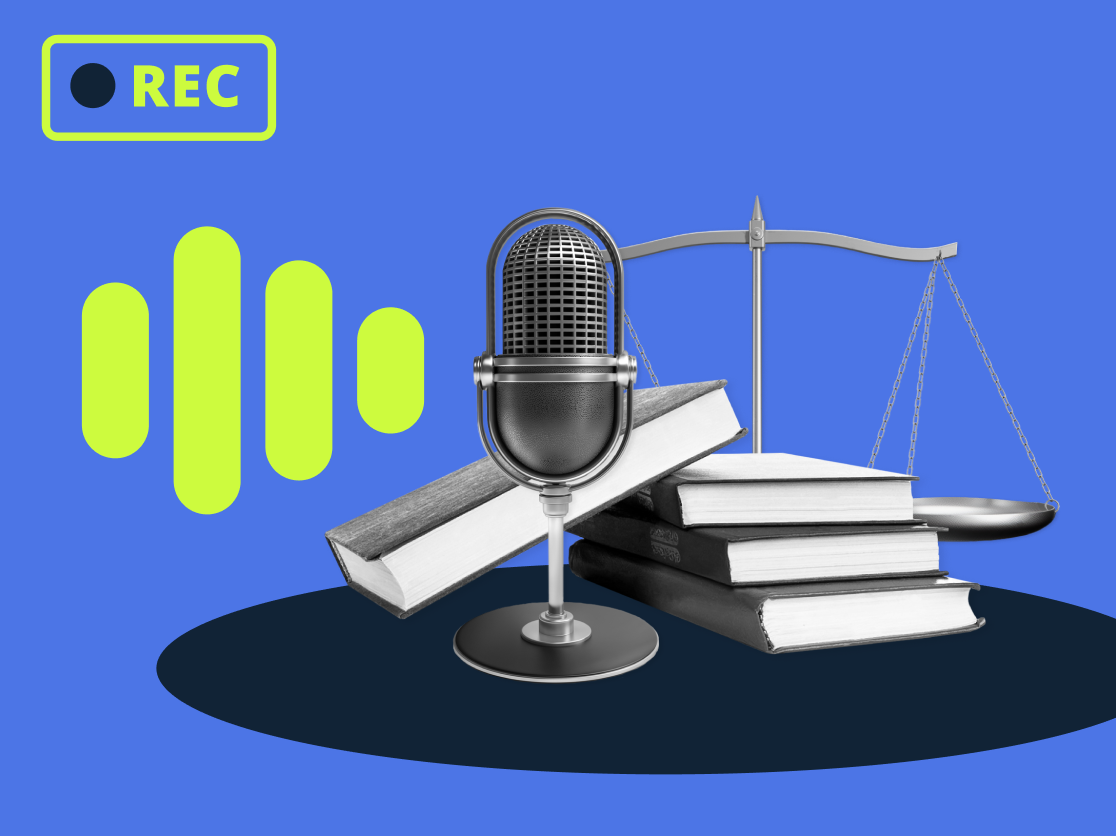When it comes to cohesion and company success, every business owner knows that effective communication is key. Without the ability to work together seamlessly and channels through which you can do so – internally with your colleagues and externally with your shareholders, clients, and potential clients – the communication process will be substantially harder than it needs to be.
Here we will give a communication channel definition and provide examples so that you can find the best option for your business.
- What is a communication channel?;
- What communication channels are used for?;
- Types of communications channels;
- Communication channels examples;
- Why are communication channels important?;
- How can using the wrong communication channels cause harm?;
- How to choose the best communication channel for your business;
- Optimal number of communication channels;
- How to effectively implement communication channels into your processes;
- Best communication tools for your business needs;
- The right communication channels can empower your team.
What is a communication channel?
A communication channel is a way through which individuals can deliver a required message to others, ask and answer any question, or share some information. Business communications go through many different means – be it phones, personal conversations, or otherwise – all of which are some communication channel examples (though we will get into specifics further down).
A lot of the time, successful communication depends upon the correct channel. The selection of which is likely dependent upon an understanding of social cues, cultural and otherwise.
What communication channels are used for?
Different communication channels of course have different means of use. Some are required for less serious situations, whereas others, particularly business channels, are required for more serious or professional circumstances.
- 1v1 communication: Sometimes two individuals (a boss and an employee, an employee and a client) have to speak one on one. The reasons can vary, but this can also limit the best channels for a given situation.
- HR announcements: Sometimes, Human Resources may have a new announcement. Depending on what it is – for a positive, a new benefit, and for a negative, a firing – the situation may demand a different communication channel.
- Customer concerns: Does a customer have a question about your product, or a service you provide? Picking the right information channels applies here as well.
- Confidential information: Is there something secret you need to share with someone, or something that’s only on a need-to-know basis? Choosing the correct communication channel in business when it comes to info like this can be critical.
Types of communications channels
While these things are not hard science, there are generally three ways to view communication channel types. Some may quarrel with certain designations, but sociologists have generally organized them by formality, by participants, and by means of communication.
By formality
For starters, channels can be designated by formality, or the seriousness, of the content.
Formal
Formal communication, when used correctly, can be one of the prime options for workplace collaboration. In fact, it should be. Here, important official statements are made, like layoffs, new company directions, or even fun announcements like company team building activities.
Informal
Informal channels can still be effective. They can be for small things, like organizing group outings, or they can be for work-related issues, like some tweaks that need to be made.
Unofficial
Finally, unofficial communications channels are things that have no relation to work whatsoever, like when two employees are discussing things which have nothing to do with work, whilst they are outside of it.
By who is participating
Channels of communication can also be split by who is part of the discussion (or at least, by who is supposed to be part of it). The difference between these two channels is key for success, so it is vital that you understand what separates the two of them.
Internal
Internal channels of business communication are used for confidential company information, or the aforementioned team buildings; essentially, it’s for stuff that those outside the group simply do not need to know about.
External
This communication channel in an organization is for when you have certain things which, on the other hand, must be sent outside of the organization to people like clients, those who sell your products, those who invest, or otherwise. Mixing these channels up can cause you problems (which we will discuss below).
By means of communication
Finally, channels can also be organized by the way the communication occurs. The modern era has unlocked tons of new ways of communication – but that of course does not mean that the old ways, like face to face or written communication channels, are no longer useful.
Digital communication
Here, communication can include email or voice calls. It can also be for pretty much anything – serious communications or fun communications can be useful here.
Face-to-face communication
This is one of the top options for the most serious discussions. Things like firings or promotions usually fall into this category. However, it can also be used as an unofficial communication channel, like asking someone for lunch.
Written communication
Written communication is similar to digital in that it can encompass a wide range of categories – and there is debate as to whether or not email would also fall into this category – from contracts to simple small messages to alerts.
Communication channels examples
1. Phone calls
Phone calls have been a mainstay example of communication channels since they first were popularized over a century ago, and they have not massively gone down in popularity when it comes to businesses.
Pros & Cons
| Pros | Cons |
|---|---|
| Reliable method of communication (hard for a call to be “lost” permanently) | Younger people increasingly are not liking receiving phone calls |
| Widely known | Without voicemail, they are one and done – they leave nothing which can be read at the receiver’s leisure |
| Relatively inexpensive when domestic |
Best for
Companies which need to make multiple successful communications in a day
Suitable for
| Formal | Informal | Unofficial | Internal | External |
|---|---|---|---|---|
| ✅ | ✅ | ✅ | ✅ | ✅ |
Don’t overdo phone calls to folks who are not already your customers.
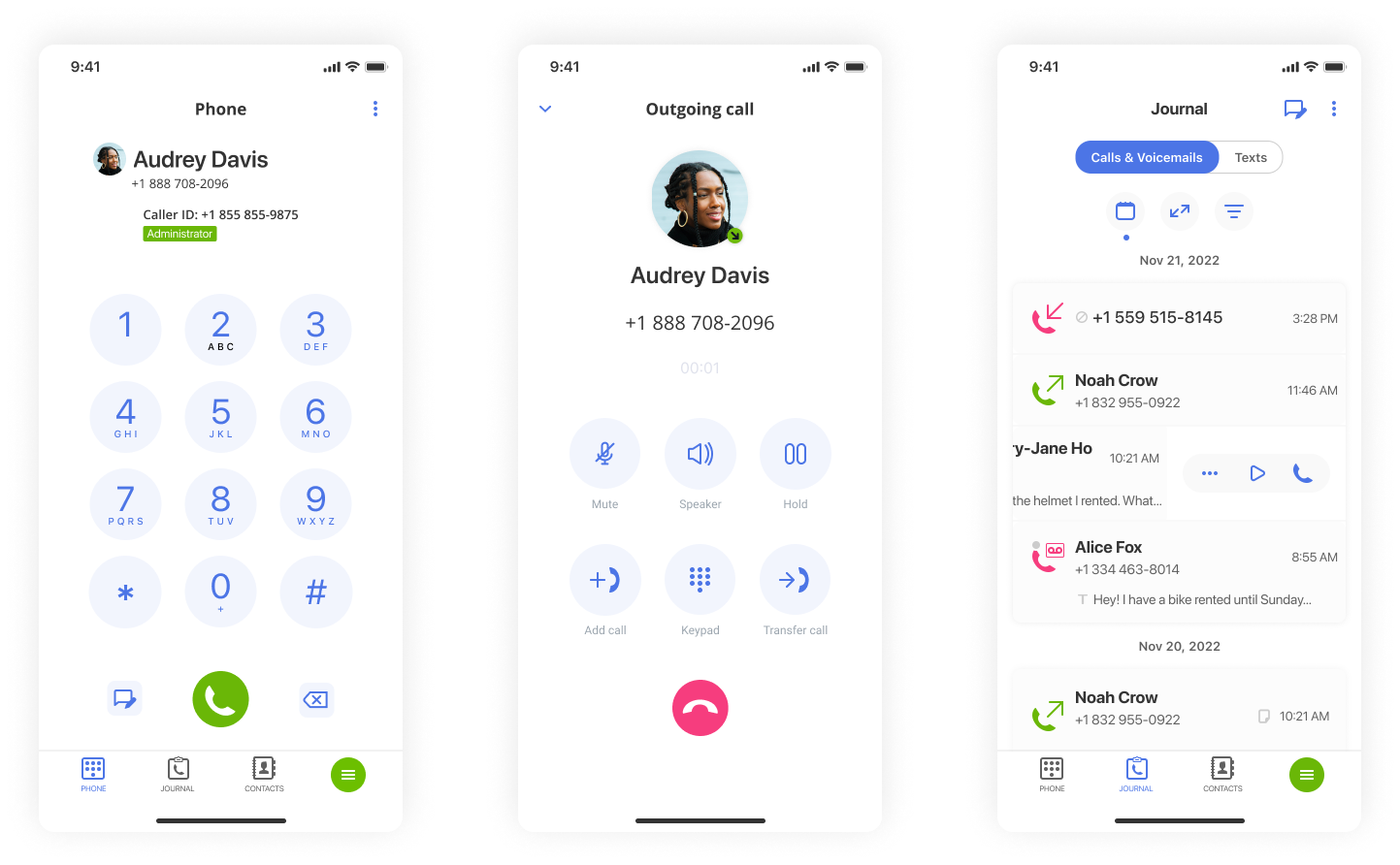
2. Email
Email is ubiquitous in the modern world and may be the most popular digital communication channel. It is everywhere and can be used for everything. You can use it for professional, important information, and can use it for “Hey who wants to eat at 12?”
Pros & Cons
| Pros | Cons |
|---|---|
| Easy and accessible – everyone has at least one email | Using it too much to external partners can be spam-y or frustrating |
| Simple to use | Cannot be used for most serious communication (like firings) |
| Easy to send out to large amount of people |
Best for
Companies who need to frequently communicate with large amounts of clients
Suitable for
| Formal | Informal | Unofficial | Internal | External |
|---|---|---|---|---|
| ✅ | ✅ | ✅ | ✅ | ✅ |
Set a certain amount of emails you want to send to customers in a given period. It might be worth spending some money to find out what your optimal marketing strategy could be.
3. Video conferences
This is one of the top communication channels that is worth mentioning. While 30 years ago the technology was too new to be used reliably – Skype only came around in 2003 – it is now everywhere and has become one of the main forms of communication internally, especially when it comes to businesses with work from home.
Pros & Cons
| Pros | Cons |
|---|---|
| Allows for more personal conversation | Not amazing for conversations with many individuals |
| Can foster closer connections | More prone to issues, like lag, or not being known by older individuals |
| Helps put a face to your business |
Best for
Companies who want a personal touch in the communication process
Suitable for
| Formal | Informal | Unofficial | Internal (when work from home) | Internal (when work in office) | External |
|---|---|---|---|---|---|
| ✅ | ✅ | ✅ | ✅ | ❌ | ✅ |
4. Chatbots
This communication channel may have a bad name amongst some folks, but generally speaking, chatbots could be said to be akin to negative political television ads: people may say they do not like them, but they work. They are a great way of communicating with a massive amount of people without having to have a single “real” person on the receiving line.
Pros & Cons
| Pros | Cons |
|---|---|
| Can “communicate” with multiple individuals at once | Not good for answering very specific questions |
| Can be pre-programmed and fine tuned over time | Can give your company a “robotic” face if not properly pre-programmed |
| Helps to answer smaller, easy-to-answer questions |
Best for
Companies who want a personal touch in the communication process
Suitable for
| Formal | Informal | Unofficial | Internal | External |
|---|---|---|---|---|
| ✅ | ❌ | ❌ | ❌ | ✅ |
5. Live chats
The difference between chatbots and live chats is essentially the difference between AI and a live responder: one tries to answer based on previous learned knowledge, and the other is a human. Here, someone is actually communicating with the individuals who are asking questions; as a result, these have grown in popularity.
Pros & Cons
| Pros | Cons |
|---|---|
| Can give the image of having a quick and personal touch to responses | May take a while to get answers to people waiting for them |
| Can make your business seem more “real” | To be truly quick and efficient, you need a decent amount of people answering questions |
| Gives a more professional look |
Best for
This communications channel is for companies who have clients who may have questions regarding personal information that they would not feel comfortable inputting into a chatbot
Suitable for
| Formal | Informal | Unofficial | Internal | External |
|---|---|---|---|---|
| ✅ | ❌ | ❌ | ❌ | ✅ |
6. Face-to-face
As the saying goes, there’s no school like old school. Speaking face-to-face is the oldest communication channel, and it’s still vitally important today. It can be used across a wide array of channels, and fits all sorts of situations.
Promoting someone? Usually face-to-face. Ran into a coworker and want to ask them to grab lunch? Face-to-face.
Pros & Cons
| Pros | Cons |
|---|---|
| Most personal form of communication | Hard to guarantee to customers if there are a lot (or if you’re short-staffed) |
| Best way to avoid misunderstandings | Is reliant upon both candidates being able to meet physically |
| Makes for more memorable discussions |
Best for
Companies desiring a personal touch
Suitable for
| Formal | Informal | Unofficial | Internal | External |
|---|---|---|---|---|
| ✅ | ✅ | ✅ | ✅ | ✅ |
7. Newsletters (Email)
Email newsletters can be a very helpful written communication channel because you can quickly get out lots of information – new store hours, competition winners, sales – to lots of individuals. People are also used to them – newsletters have been (as will be discussed later) going out for decades.
Pros & Cons
| Pros | Cons |
|---|---|
| Allows for quick contacts to anyone who has ever provided you with their email | Can seem annoying if used too often |
| Can get out variety of different information | Can be lost in spam folders unknowingly |
| Can, if used correctly, reactivate old customers |
Best for
Low-budget businesses
Suitable for
| Formal | Informal | Unofficial | Internal | External |
|---|---|---|---|---|
| ❌ | ✅ | ✅ | ❌ | ✅ |
8. Newsletters (Mail)
This communication channel, on the other hand, is the original version of the newsletters we all have come to love (or at least come to know). These are the letters, or sometimes catalog-type parcels, you would get alerting you to all the things that email newsletters now tell you about. These help you become aware of things in a more personal way.
Pros & Cons
| Pros | Cons |
|---|---|
| Guaranteed they are seen by receivers – there is no “spam” mailbox for ordinary people | May not receive attention if people do not pay attention to their physical mail |
| Can provide receivers with physical things they will want (like coupons) | May be incorrectly ascribed to “junk mail” |
| Relatively cheap to send en-masse |
Best for
Medium or large-sized businesses like grocery stores
Suitable for
| Formal | Informal | Unofficial | Internal | External |
|---|---|---|---|---|
| ❌ | ✅ | ✅ | ❌ | ✅ |
9. Social media account page
Social media is a modern communication channel, and it is also exceedingly popular. Brands, by having accounts which are on the same “level” as ordinary people, can interact with customers – by sharing memes and funny images, they can seem hip and get noticed if a post goes viral.
Pros & Cons
| Pros | Cons |
|---|---|
| Allows your business to be part of a massive network of individuals | Can easily seem uncool if latching onto an old trend unironically |
| Can take advantage of current trends and pop-culture references | Can be lost in the sea of social accounts, if one does not really make it “pop” or stand out |
| Access to the site is free |
Best for
Any business, from those just getting started to established ones (it’s free, after all)
Suitable for
| Formal | Informal | Unofficial | Internal | External |
|---|---|---|---|---|
| ❌ | ✅ | ✅ | ❌ | ✅ |
10. Radio advertisements
People may think the radio is an “old-fashioned” communication channel, but it’s not – a Pew poll found that 8 out of 10 Americans 12 or older listen to the radio at least some time in a given week. That is a HUGE amount of people – and if you are ignoring the possibilities present in radio advertising, it’s an untapped goldmine.
Pros & Cons
| Pros | Cons |
|---|---|
| Broadcasts your message to a wide variety of individuals | Missed by anyone who does not listen to radio |
| Can be heard uninterrupted | Can be tuned out by individuals switching to a different station |
| Relatively inexpensive for short commercials |
Best for
Business well established in a given region
Suitable for
| Formal | Informal | Unofficial | Internal | External |
|---|---|---|---|---|
| ❌ | ✅ | ✅ | ❌ | ✅ |
You get 15-30 seconds to stand out in a sea of radio commercials. Make yours count! An original approach is a winning approach.
11. Podcasts
Podcasts are a communication channel that have taken the world by storm. Tons of people have podcasts – and so do companies, which is why it’s made its way onto our list of communication channels.
It’s an incredibly effective means of communication: you control the entire medium (it’s effectively your own “radio show”) and can say whatever you’d like without risk of someone else interfering. Plus, how you make it can shape your public perception of your business. If you make it fun to listen to, you’ll seem fun. Seriously? You’ll seem serious.
Pros & Cons
| Pros | Cons |
|---|---|
| Format allows for diversity of content and topics | Can be a waste of time if you don’t target it correctly (a bank doing a comedy) |
| Very easy to make it available to many people (Spotify, Apple Music, and other methods are widely accessible for creators) | Can hurt your business if poorly produced (bad sound quality) |
| Can be cheap to make |
Best for
Pretty much this channel of communication suits any business, but solopreneurs should know that making a podcast consistently can eat your time.
Suitable for
| Formal | Informal | Unofficial | Internal | External |
|---|---|---|---|---|
| ✅ | ✅ | ❌ | ❌ | ✅ |
12. Text messages
Everyone texts. Seniors text. Kids text. Students text. Texting is rapidly becoming one of the mainstays of communications. It’s easy, quick, and requires little effort on the part of all involved. So why wouldn’t businesses start using texting as a communication channel?
Pros & Cons
| Pros | Cons |
|---|---|
| Easy to get a short message out to massive amounts of people | Can be seen as intrusive if people do not remember having given you their number |
| Can use information (telephone numbers) you already have access to | Phones may classify as spam |
Best for
Business with a large list of client data
Suitable for
| Formal | Informal | Unofficial | Internal | External |
|---|---|---|---|---|
| ❌ | ✅ | ✅ | ❌ | ✅ |
Why are communication channels important?
Correctly choosing communication channels is incredibly important, as it can make or break a successful communications push. Here are some of the ways you can benefit if you manage to pick them correctly:
- Make sure those that need to be informed are informed: If you pick a method the people who need to hear your message use, they are more likely to hear it
- Get information out on an even basis: Make sure to pick an effective communication channel which does not leave anyone out – or anything to chance
- Make people feel part of the conversation: If you pick a channel which is a two-way street, people will feel more heard and part of the discussion
- Build relationships with clients: If you pick the wrong channels, you can appear annoying. But if you pick the best channels of communication, you can ensure that you get closer than ever with clients.
How can using the wrong communication channels cause harm?
- You can seem overbearing: In 2003, a poll found that 70% of email users found spam annoying – and you can bet those numbers have not dropped in the last 20 years.
- You can reach the wrong people: Trying to reach specific loyal customers but putting physical newsletters in the mailboxes of everyone in a given area? You’re just wasting your time.
- You can seem inappropriate: If you’re trying to deliver bad news – a mortgage being declined, a job offer being rescinded – it can seem unprofessional or even rude to use certain communication channels.
- You can waste your money: Some ad campaigns can be really expensive. But if you target them wrongly, you can be basically throwing that money down the drain.
How to choose the best communication channel for your business
When choosing the best communication channels channels, be sure to keep what we call the “Five Figures” in mind:
1. Figure out what you want to say
Are you trying to establish channels of communication in the workplace? Is this an internal channel, or an external channel? Start off knowing that aspect before moving on.
2. Figure out who will be on the giving end
If you are setting up a channel that your employees (or you) are going to have to run, make sure that it is something they’re comfortable with. Some channels, like social media, can require you to deal with really nasty people all day – is your team up to the task? Are you?
3. Figure out when you wish to make contact
Do you want this to be one of the communication channels in the company which is available day and night? Is it only going to be used once in a great while? These are things you’ll need to know before starting off.
4. Figure out if it will be a one-way or two-way channel
Is this going to be a communication channel that you will want to receive responses through, like a two-way communication live chat? Or is it more of a one-way mail newsletter?
5. Figure out how much you want to spend
A key part of project management is being able to know how much money it is going to cost. While you cannot make all the predictions ahead of time, you should be able to figure out generally how much it will run you, in order to know if it’s feasible or not.
Optimal number of communication channels
To create the best sorts of customer interaction (or internal communication), you have to make sure to figure out how many channels are required. But keep in mind when implementing new communication channels: the more channels you have, the more difficult it can be.
Remember, in order to have successful communication, a message of some type must be sent from one or more people via a channel and successfully received by one or more others. The formula most commonly used for this is:
How to effectively implement communication channels into your processes
- Clearly delineate the channels: The importance of communication channels shouldn’t be ignored – but their purpose shouldn’t be ignored either. Make clear which channels will be used for which purposes. If something seems unclear, make it clearer now instead of waiting until it’s set up.
- Make them yours: Fit the channels to the needs of your business, instead of keeping them generic.
- Set up who will be using it: Which employees will be utilizing this channel? Will you need to hire new ones, or will you be using old employees for a new purpose?
- Imagine what comes next: How long will you be wanting to utilize this channel? Will it be ad infinitum, or a certain amount of time?
- Do a test run: To make sure that everything runs smoothly, do a limited test run; contact only a few people, or run it for a small amount of time, to make sure everything works ok.
Best communication tools for your business needs
1. MightyCall
MightyCall is one of the best communication tools. A VoIP telephony company which offers a well-rounded customer service communication package, they focus on internal and external communication. With the ability to keep talking within your company and to your clients through various means – from SMS to phone calls and more – you’ll always have channels for workplace collaboration.
How much does it cost?
MightyCall has three price plans. The cheapest is Core, at only $15 per member/month, followed by Pro, which is $25 per member/month, and Enterprise – which requires you to get a quote.
Who is it best for?
MightyCall is best for small to medium-sized businesses.
2. Slack

Slack has become one of the premier digital communications programs for internal communications. While it’s not a traditional communication channel, it’s one of the types of business communication channels that you should not overlook. With the ability to easily create unique “Slack channels” based on your department (so a “Sales” channel, or a “Marketing” channel) you can ensure that the streams don’t get crossed.
How much does it cost?
Slack offers a free program and a subscription program. They do not make it overly easy to find out pricing, but generally their Pro subscription plan costs around $8 per user per month, while their Busienss+ plan will run you about $12.50 per user per month.
Who is it best for?
Slack is best for medium to larger businesses.
3. X (formerly known as Twitter)
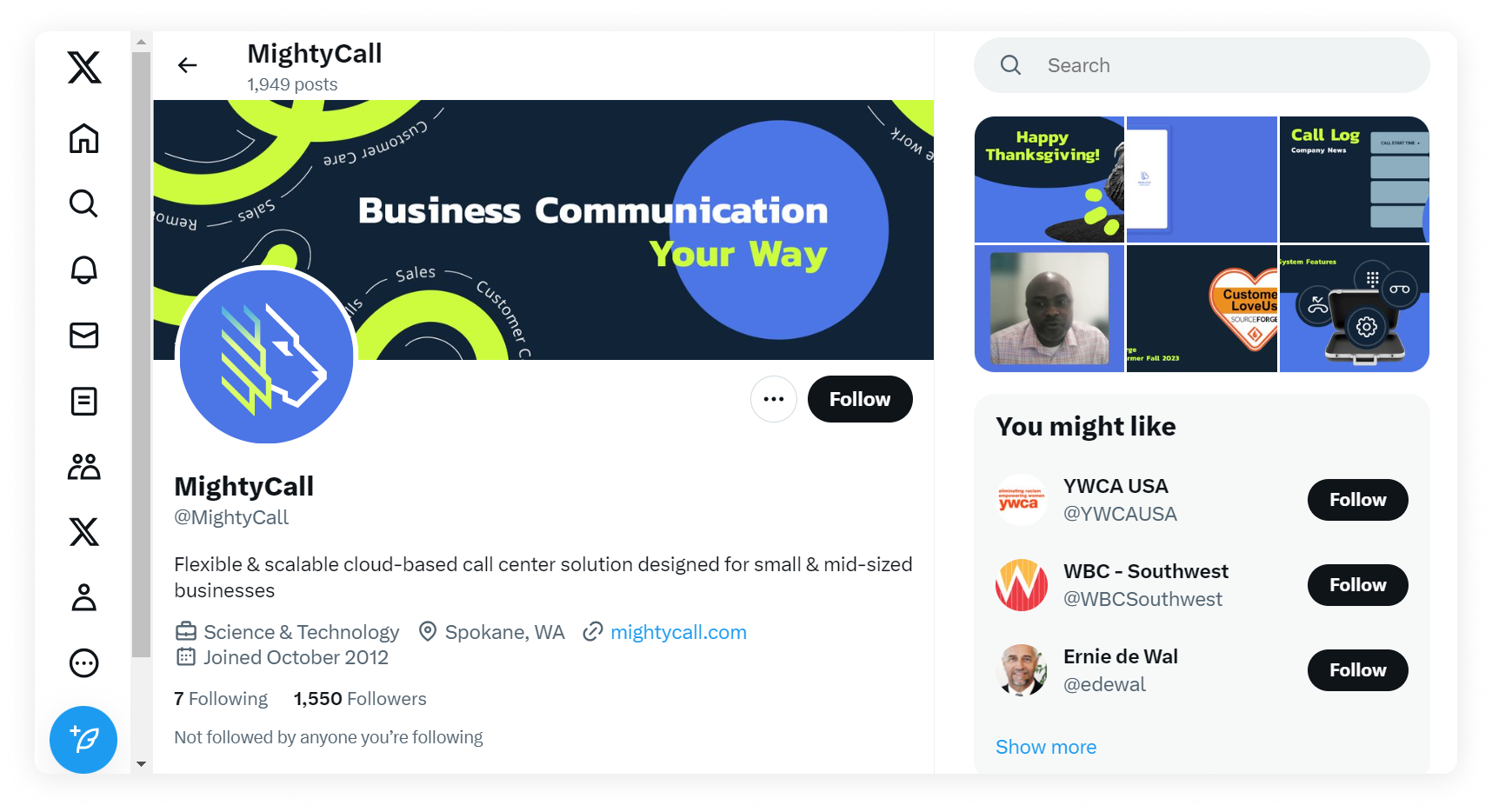
X is one of the most popular social media sites out there. Millions of people on a daily basis post and spread memes, ideas – and interact with brands. When done correctly, you can help your brand take off in a viral sensation – or you can just use it to help respond to customer complaints.
How much does it cost?
X is free to use, but the ownership is going to introduce multiple paid subscription plans in the near future allowing you to use more features (and avoid ads).
Who is it best for?
X is best for all comers, since a basic platform is essentially free.
4. Chatbot
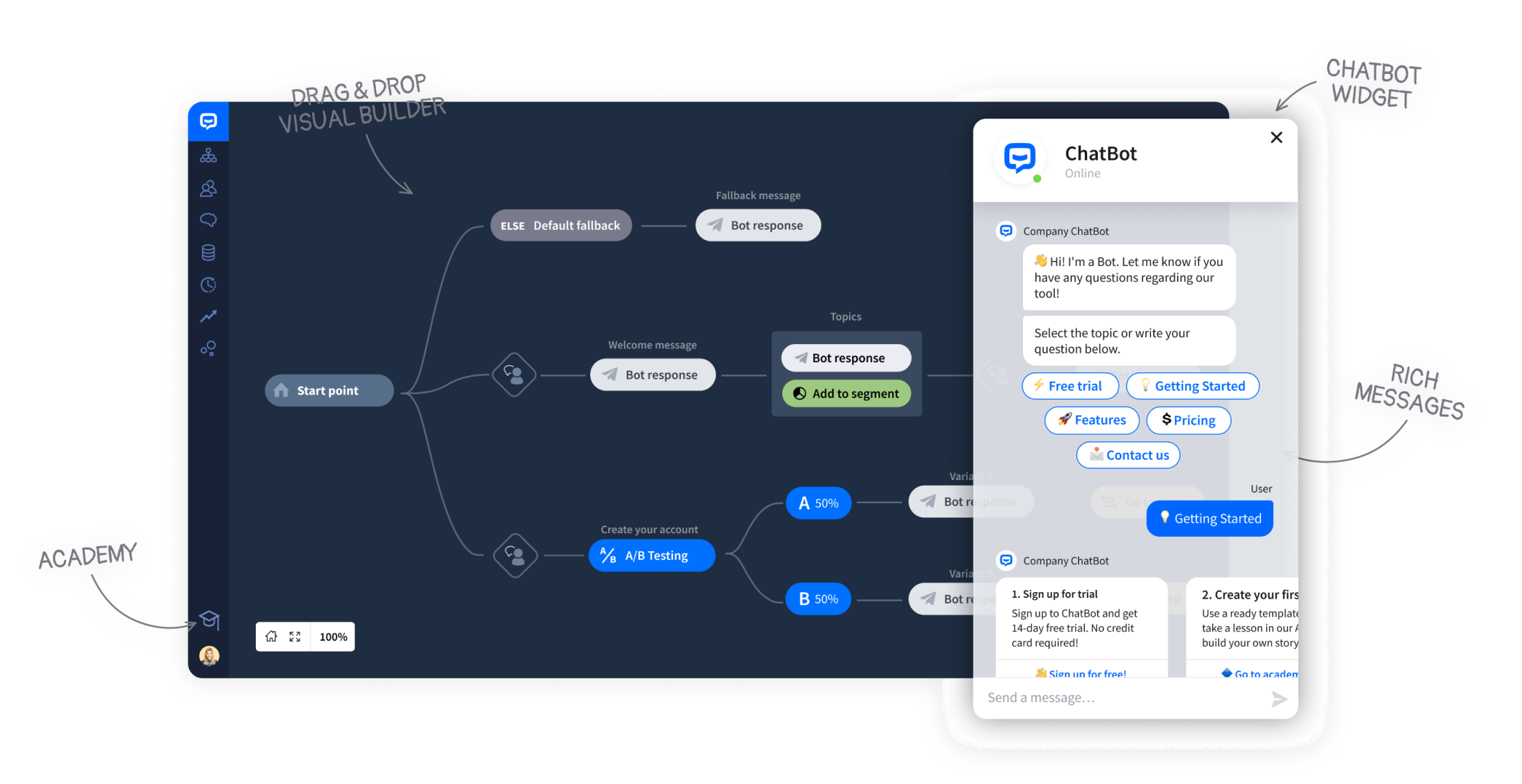
This isn’t just a category – it’s also the name of a company. Chatbot offers companies of multiple sizes the ability to add a chatbot widget to their website. This they can then customize in order to suit the needs of your company.
How much does it cost?
For smaller companies, Chatbox costs $52 per month. For larger companies, it’s $142 per month.
Who is it best for?
Chatbot is best for companies who are trying to surge growth (by answering lots of questions) or who are surging but do not have the staff to answer all questions.
5. Substack
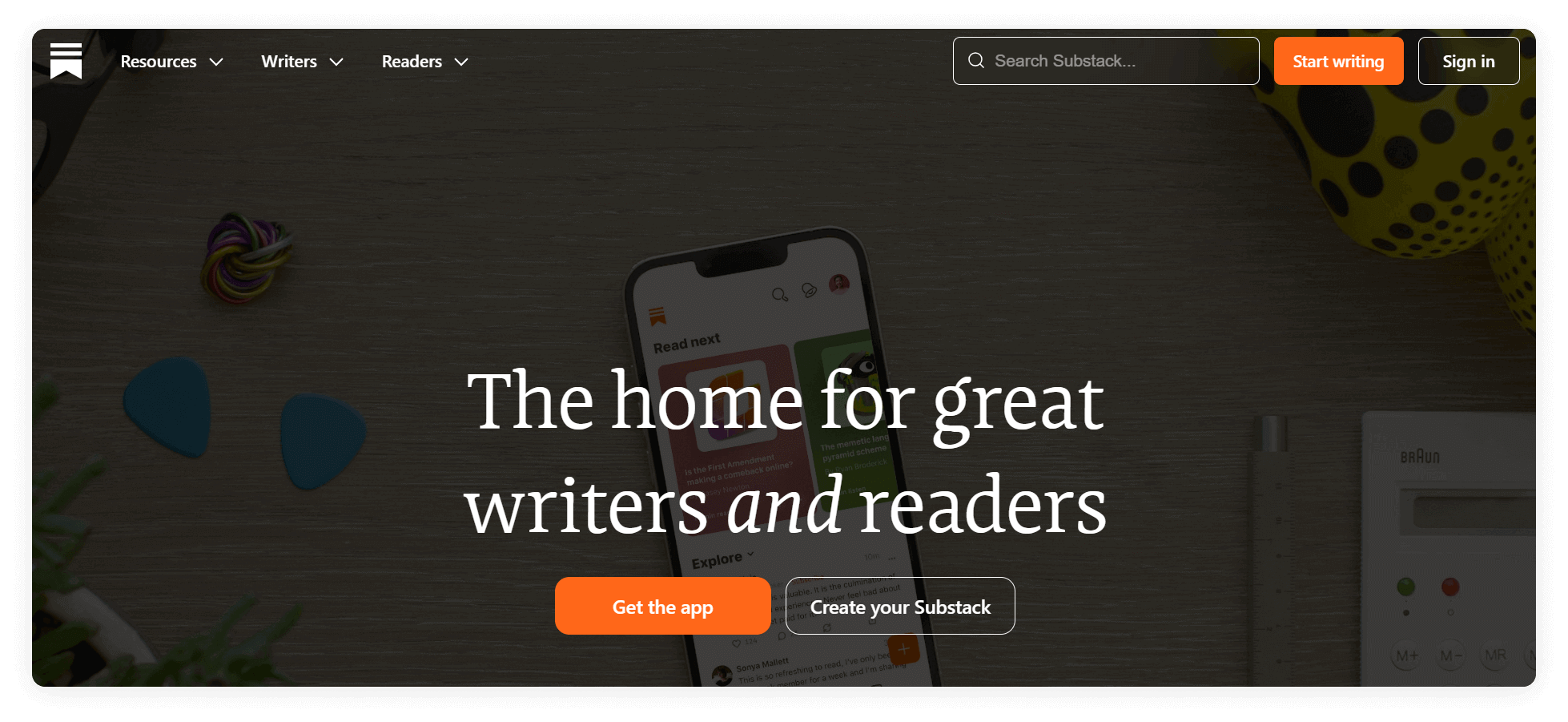
Substack has taken off lately in a huge way. Essentially, it’s a blog service which allows you to build a community around your work: readers can comment and subscribe for special subscriber-only posts. It’s a great way to build yourself up if you put out quality work.
How much does it cost?
It’s free to use, but Substack takes a 10% cut of subscriptions. Costs for readers vary, as they are set by the authors.
Who is it best for?
Solopreneurs and single writers.
The right communication channels can empower your team
With the right types of communication channels, you can bring your team together closer internally and you can bring them closer externally to your clients. Don’t let yourself be restricted to just one way of connecting to others – take advantage of new technologies today.
When doing so, we’d recommend checking out MightyCall, a premium telephony company which provides you with the tools to help your business make the contacts you’ve always wanted.




